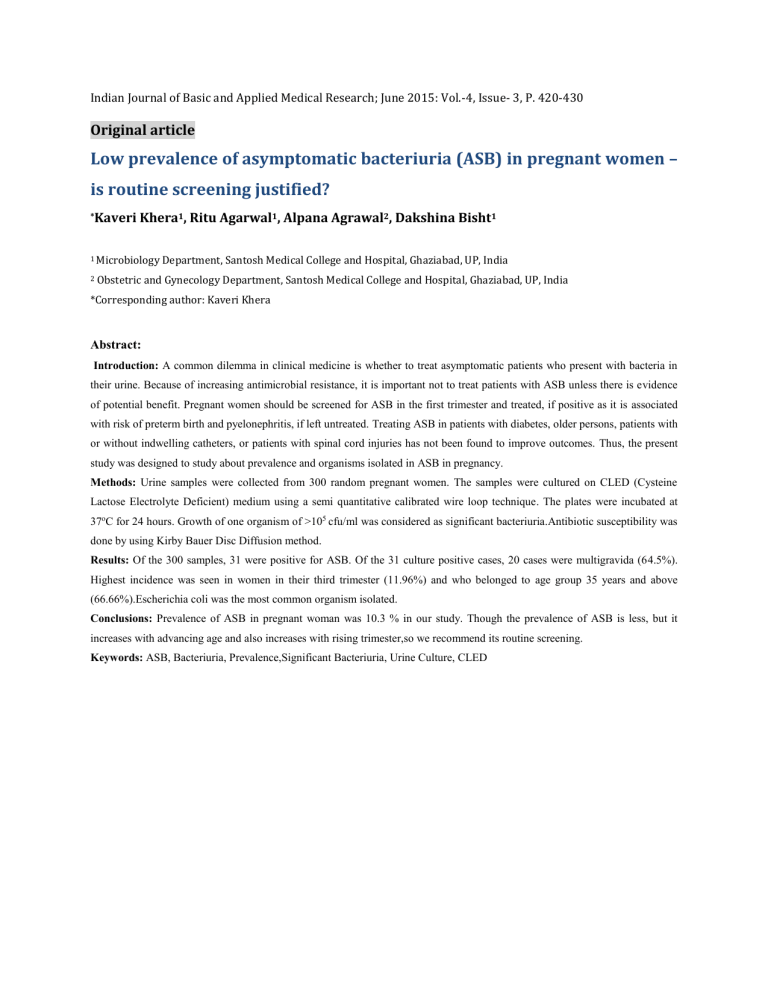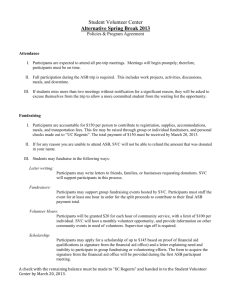Low prevalence of asymptomatic bacteriuria (ASB) in

Indian Journal of Basic and Applied Medical Research; June 2015: Vol.-4, Issue- 3, P. 420-430
Original article
Low prevalence of asymptomatic bacteriuria (ASB) in pregnant women – is routine screening justified?
*
Kaveri Khera
1
, Ritu Agarwal
1
, Alpana Agrawal
2
, Dakshina Bisht
1
1 Microbiology Department, Santosh Medical College and Hospital, Ghaziabad, UP, India
2 Obstetric and Gynecology Department, Santosh Medical College and Hospital, Ghaziabad, UP, India
*Corresponding author: Kaveri Khera
Abstract:
Introduction: A common dilemma in clinical medicine is whether to treat asymptomatic patients who present with bacteria in their urine. Because of increasing antimicrobial resistance, it is important not to treat patients with ASB unless there is evidence of potential benefit. Pregnant women should be screened for ASB in the first trimester and treated, if positive as it is associated with risk of preterm birth and pyelonephritis, if left untreated. Treating ASB in patients with diabetes, older persons, patients with or without indwelling catheters, or patients with spinal cord injuries has not been found to improve outcomes. Thus, the present study was designed to study about prevalence and organisms isolated in ASB in pregnancy.
Methods: Urine samples were collected from 300 random pregnant women. The samples were cultured on CLED (Cysteine
Lactose Electrolyte Deficient) medium using a semi quantitative calibrated wire loop technique. The plates were incubated at
37 o C for 24 hours. Growth of one organism of >10 5 cfu/ml was considered as significant bacteriuria.Antibiotic susceptibility was done by using Kirby Bauer Disc Diffusion method.
Results: Of the 300 samples, 31 were positive for ASB. Of the 31 culture positive cases, 20 cases were multigravida (64.5%).
Highest incidence was seen in women in their third trimester (11.96%) and who belonged to age group 35 years and above
(66.66%).Escherichia coli was the most common organism isolated.
Conclusions: Prevalence of ASB in pregnant woman was 10.3 % in our study. Though the prevalence of ASB is less, but it increases with advancing age and also increases with rising trimester,so we recommend its routine screening.
Keywords: ASB, Bacteriuria, Prevalence,Significant Bacteriuria, Urine Culture, CLED











